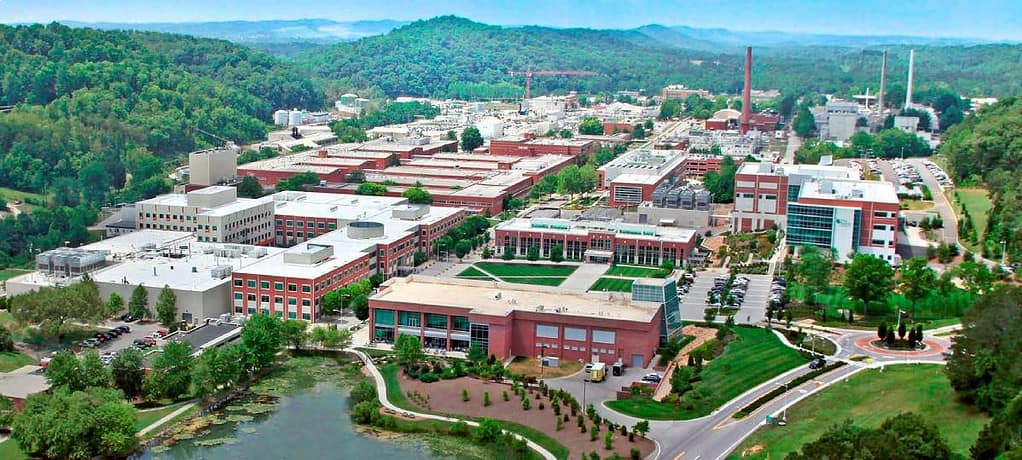The region’s past accomplishments have attracted more than 150 nuclear companies to the area, she said, with more expected to be drawn by the Lab’s current work.
Besides developing new enrichment facilities to ensure the nation’s supply of stable isotopes, ORNL is advancing a variety of enrichment methods, including modern gaseous diffusion, electromagnetic isotope separation and plasma separation.
In addition, Hubbard said, the National Nuclear Security Administration has tapped ORNL to lead the development and deployment of small centrifuge technology that will go into a pilot facility within this decade. The centrifuge ultimately will be produced by private sector partners, with ORNL as the design authority.
“ORNL will be at the center, playing a vital role for making sure science and technology is as good as it can be for our domestic uranium enrichment needs in the nation for years to come,” Hubbard said. “It’s a very exciting time to look to the future in East Tennessee.”
This is the 90th National Historic Chemical Landmark designated by the ACS since the program’s start in 1992. It’s the second at ORNL; in 2008, the ACS recognized the production and distribution of radioisotopes for civilian research and medical use at the Oak Ridge National Laboratory in 1946.
The process was started by the late Wilber “Dub” Shults, retired director of ORNL’s Analytical Chemistry Division, who chaired the ACS East Tennessee section. It was taken up by a committee headed by Oak Ridge Associated Universities retiree Arlene Garrison.
The plaque will be displayed at the K-25 History Center, which opened to the public in 2020 on the property and has both artifacts and interactive exhibits. In addition, a Junior Ranger program lets students who visit the Manhattan Project National Historical Park and finish an activity book that includes K-25 history and chemistry earn a Junior Ranger Chemist badge. The first group of students, in collaboration with UT-Battelle, are set to complete the badge next week.
For Conner, whose career started at K-25, remembering the impact of his own years at the site makes him excited for its future.
“Many of us thought they’d never shut down K-25,” he said, “but they did, and with good reason, because we had enriched all the material we needed to for weapons and peacetime usage. So we were trying to find the next thing.”
Now, again, he’s eager to see what the “next thing” is for the remediated site – and for the nuclear industry.
“I like to say that I’ve been part of three nuclear renaissances,” Conner said. “I was born in 1946, during the first one. When I graduated college in 1968, the next 10 or so years, there was a second nuclear renaissance of sorts. And now, here we are in 2025, with another nuclear renaissance. Even though the facilities that I operated when I was here as a young engineer are gone, now you have new companies coming into the area, running new facilities.
“How about that? Three nuclear renaissances. It’s amazing.”
This Oak Ridge National Laboratory news article "Former K-25 site dedicated as a historic chemical landmark – but still making history" was originally found on https://www.ornl.gov/news

